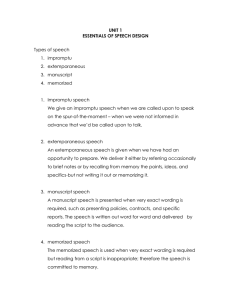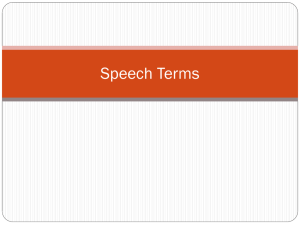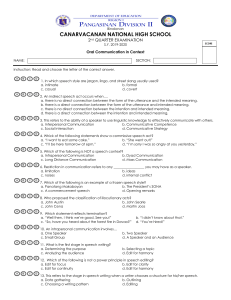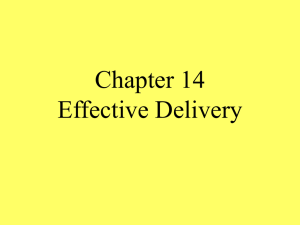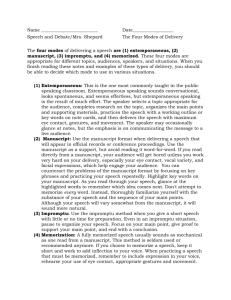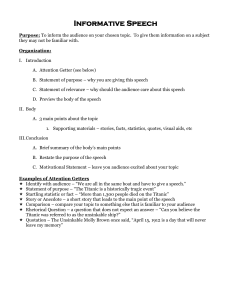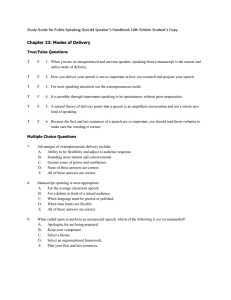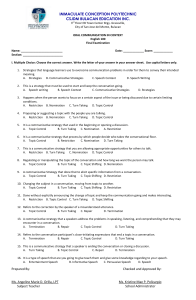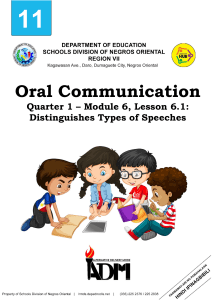JEC PS1L - Commo, Types, Purposes
advertisement
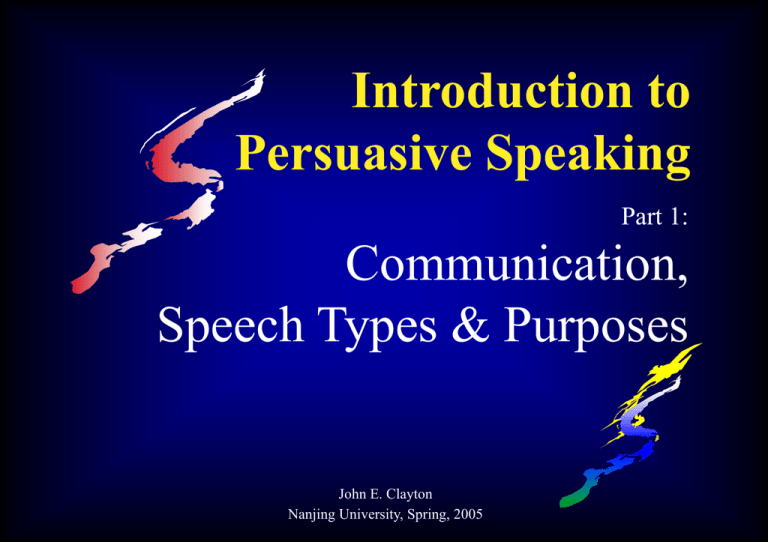
Introduction to Persuasive Speaking Part 1: Communication, Speech Types & Purposes John E. Clayton Nanjing University, Spring, 2005 John Clayton • BS – Business, Brigham Young University MBA – Utah State University • Joined IBM 1970 Retired 2003 • Currently teaching English Writing & Public Speaking at Nanjing University • Married 36 years 8 children 17 grandchildren My Family I Was Once Skinny Class Policy • Your attendance at every class is expected. • If you miss a class, you must make-up the work missed. • Class starts on the hour – be on time. • 10 minute break between hours • There is a 10 RMB materials fee for the class. Class “Add” Policy • Because of the nature of this speech class, only 30 students may participate and receive credit. • Additional students may audit the class, but they will not participate, and will not receive credit. • Audit students should try to sit toward the back of the classroom. Syllabus 02/28 03/07 03/14 03/21 03/28 04/04 04/11 04/18 04/25 05/02 05/09 05/16 05/23 05/30 06/06 06/13 06/20 Orientation; Photos; Communication; Speaking types & purposes Persuasion and reasoning; Peer Criticism Speech 1 Review of speech 1; Audience analysis Speech writing process; Speech components & outline; Monroe sequence Speech 2 Review of speech 2; Overcoming fear; Selecting topic and thesis HOLIDAY – NO CLASS Researching & supporting material Speech 3 Review of speech 3; Speech delivery tips Using visual aids Clean-up – final review and preparation for speech 4 Speech 4 Speech contest prep; Final exam; Evening – speech contest Objective – to Change & Improve Types of Communication Mass Communication Small Group Conversation Public Speaking A speaker delivers a message with a specific purpose to an audience who are present. Basic Elements of Communication Message Speaker NOISE Feedback Listeners Basic Elements of Communication Speaker - You Listeners – Your audience Message – The point you are trying to make Noise – Barriers to communication Feedback – Information back to the speaker Feedback Information from the audience • Is my message being received as planned? • Do I need to change anything? Verbal clues – comments from the audience. Non-verbal clues - gestures, facial expressions, body movements, sounds. Noise Barriers to Communication •Physical distractions noise, poor lighting, uncomfortable seating, unpleasant smells, interruptions, restricted time, etc. •Emotional distractions Pressures (work, health, money, etc.), mood, enforced attendance, fear, shyness, aggression, resistance to learning, too old to learn, status differences, etc. • Language and cultural differences vocabulary, unusual words, gestures, etc. Purposes of Public Speaking Goal: express opinions and viewpoints in an orderly, civil way, regardless whether or not the audience shares your viewpoint. Inform - training, new issues, etc. Persuade - convince, motivate Entertain - club, wedding, etc. Types of Presentations • Impromptu spontaneous, spur of the moment • Extemporaneous some preparation; not memorized or written • Manuscript speech read from a manuscript • Memorized speech presented entirely from memory Speech Grading Content (6 points) Topic related to the assignment? Are facts accurate? Main points supported by evidence? Anything important missing? Organization (7 points) Clear introduction? Purpose communicated in introduction? Clear conclusion? Conclusion reiterate main idea? Main points clearly articulated? Is the order logical? Delivery (7 points) Eye contact with audience? Loud enough? Distracting mannerisms avoided? Appropriate gestures? Prepared enough not to need notes? Visual aids appropriate? Key Points to Remember Five Factors in Communication Speaker, Listener, Message, Noise, Feedback Why Use Public Speaking? Orderly way to express opinions & viewpoints Three Key Uses Inform, Persuade, Entertain Speech Types Impromptu, Extemporaneous, Manuscript, Memorized Homework Begin preparing your first speech • To be presented March 14th • 3 minutes • Written out • Topic: “Why you should visit my hometown” Begin Now Begin homework assignment NOW, while I take your picture
